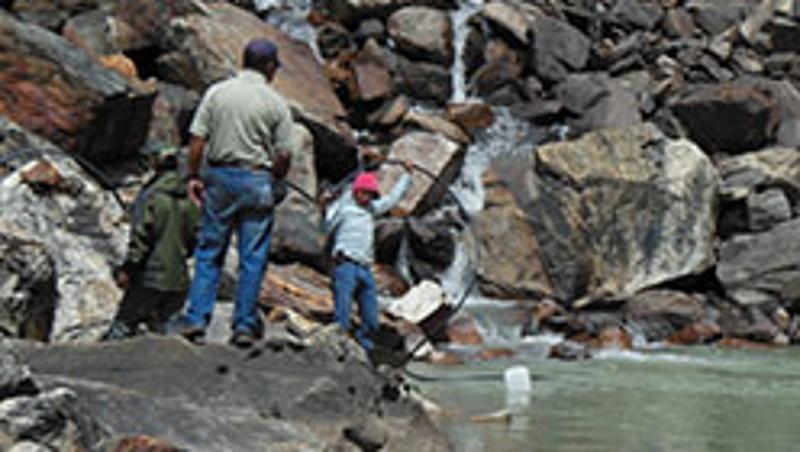
Damage from future earthquakes in Nepal and other nations in the Himalayas could be partly mitigated by a humble plastic pipe, according to a Queensland physicist.
Dr Stephen Hughes from QUT's Science and Engineering Faculty said the recent earthquake in Nepal illustrated the risk glacial lake outburst floods (GLOF) posed to downstream communities in the Himalayas.
In 2012 a GLOF, or inland tsunami, swept through two villages and Nepal's second largest city, Pokhara, killing up to 60 people and changing the course of the Seti River.
"Sadly, there is the potential for many more GLOF disasters in the future due to glacial lakes being damaged by earthquakes," said Dr Hughes, a member of QUT's Institute for Future Environments.
"As the world warms, causing glaciers to shrink, the lakes at the head of the glaciers are increasing in size and depth.
"This is putting strain on the natural dam walls, which are built from rocks gouged from the mountains by the glacial ice.
"At QUT, we are researching the use of simple siphons to drain water from glacial lakes, to reduce the risk of GLOFs in the future.
Dr Hughes said all nations with territory in the Himalayas are at risk of inland tsunamis.
Bhutan has suffered two deadly GLOFs in the past several decades, a 1994 tsunami in the Punakha Valley killing 21 people and causing massive destruction.
Dr Hughes and QUT civil engineer Professor Les Dawes have conducted experiments in Bhutan which demonstrate that siphoning water from glacial lakes could be the key to preventing these inland tsunamis.
They have set up a crowdfunding campaign to raise $25,000 to conduct experiments at Lake Manchester near Brisbane then scale up the experiments in Bhutan and train local farmers how to use the siphons.
Professor Dawes said the physically challenging experiment in Bhutan involved a 35km hike from their base camp at 3,000m to a lake situated at 4,200m, just below Jichu Drake, a 6,794m mountain.
"Working at this altitude meant our oxygen level was down to 60 per cent of what it would be at sea level, but we were able to conduct our experiment and demonstrate that siphons constructed from 2.5cm diameter polypipe could be used to drain glacial waters to reduce the risk of floods," he said.
"This is an important finding as glaciers around the world are continuing to shrink - a study of 103 glaciers in Bhutan between 1963 and 1993 revealed that 87 per cent of them had shrunk an average of 6m per year.
"Ultimately, it would be good to get to the point where local farmers, such as the yak farmer who accompanied us on our expedition, had access to enough polypipe to set up siphons at the start of summer.
"This would be an extremely cheap and effective way of preventing potential disasters."
Dr Hughes said siphoning could provide an unexpected bonus to Bhutanese villages.
"It would be very simple to run a pump at the other end of the siphon and create a micro-hydroelectric facility," he said.
"Most villages in the mountains have no electricity at present except for a few small solar panels in some cases. However, in general the mountains of Bhutan are not a good place for solar power since sunrise is late and sunset early because of the mountains and there is a lot of cloud cover."
The experiment was also conducted with Som Gurung, Dean of Academic Affairs at Paro College of Education, Royal University of Bhutan who is also a QUT PhD student being supervised by Dr Hughes and Professor Dawes.
The expedition was jointly funded by QUT's School of Chemistry, Physics and Mechanical Engineering, within the Science and Engineering Faculty, and the Institute for Future Environments.
RELATED STORIES
DIY siphon can drain domestic floodwater
How a plastic pipe could stop an inland tsunami and power a village
Physicist demonstrates dictionary definition was dodgy
Media contact
Kate Haggman, QUT Media, 07 3138 0358, kate.haggman@qut.edu.au
After hours Rose Trapnell, QUT Media team leader, 0407 585 901


